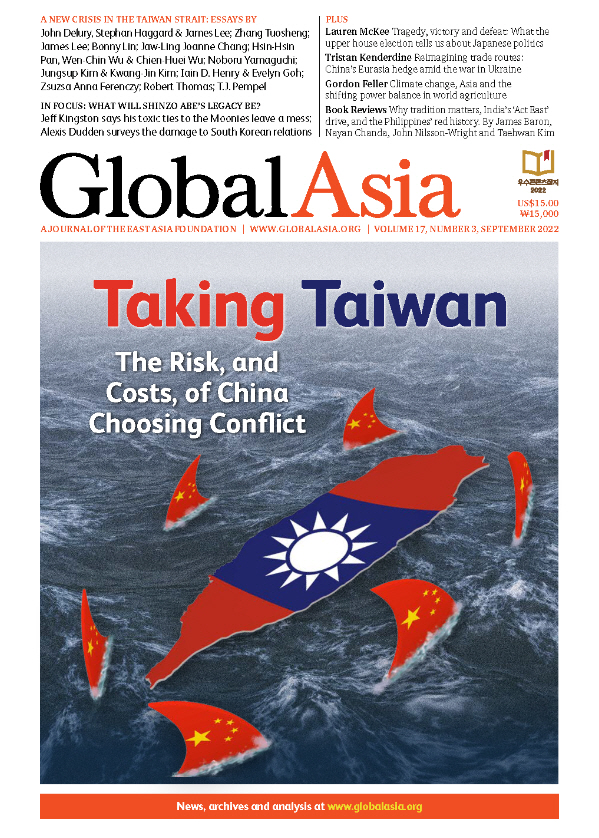Welcome to Our September 2022 Issue
Dear Reader
It didn’t take long after Russia’s invasion of Ukraine on Feb. 24 for some to speculate whether China might take a page from Vladimir Putin’s playbook and seize the opportunity to take Taiwan by force. Conspiracy theorists only had to point to a key meeting between Putin and Chinese leader Xi Jinping in Beijing before the opening of the Winter Olympics, only weeks before Russia’s invasion. The two leaders, who share a deeply felt distain for Washington’s dominance of the international order, declared after their meeting a “no limits” friendship between Moscow and Beijing. But, as the authors of the introduction to this cover package of Global Asia write: “Facile comparisons make bad policy: China is not Russia and Taiwan is not Ukraine.”
US House Speaker Nancy Pelosi’s visit to Taiwan in early August sparked a furious response from Beijing, which conducted its most extensive military exercises ever around the island, refocusing global attention on the potential catastrophe that would unfold if China were to attempt a forcible move on Taiwan. We may have landed in a “Fourth Taiwan Strait Crisis,” the authors of our introduction say. “The debate on this characterization is only beginning, but there is a consensus that tensions in the Taiwan Strait have not been this high since the Third Taiwan Strait Crisis in 1995-1996.”
In this cover package, we have assembled a range of views on a possible military contingency in the Taiwan Strait. It is sobering reading. Included are perspectives on the positions of China, Taiwan and the United States — the central players if a conflict were to break out. A series of further essays takes account of the broader regional positions, including those of Japan, South Korea, Australia, Southeast Asia and the European Union. Finally, we look at the military elements that would be involved in a possible defense of Taiwan, the enormous economic costs of a conflict and the prospect that this might itself constrain such a possibility.
We would like to express our gratitude to the Asia Research Fund for its generous support of this cover package, which emerged out of a collaboration between the University of California Institute on Global Conflict and Co-operation (IGCC) and the Sejong Institute.
In our Features section, we examine the outcome of the latest Upper House elections in Japan and what they say about the state of domestic politics in the country; how China is re-imagining its trade routes through Turkey to Europe as a geopolitical and economic hedge at a time when Russia retreats from the global economy; and how climate change is having an impact on agriculture in Asia.
Elsewhere, our In Focus section takes a look at the mixed legacy of Shinzo Abe in Japan and South Korea in the wake of the former prime minister’s assassination.
As always, our Book Review section highlights notable recent works on Asia, which we hope you’ll add to your reading list.
Sincerely yours,
Chung-in Moon
Editor-in-Chief
David Plott
Managing Editor
* 출처: Global Asia (September 2022 Vol.17 No.3), “Taking Taiwan: The Risk, and Costs, of China Choosing Conflict" (서문 발췌함)
* 링크: Global Asia

